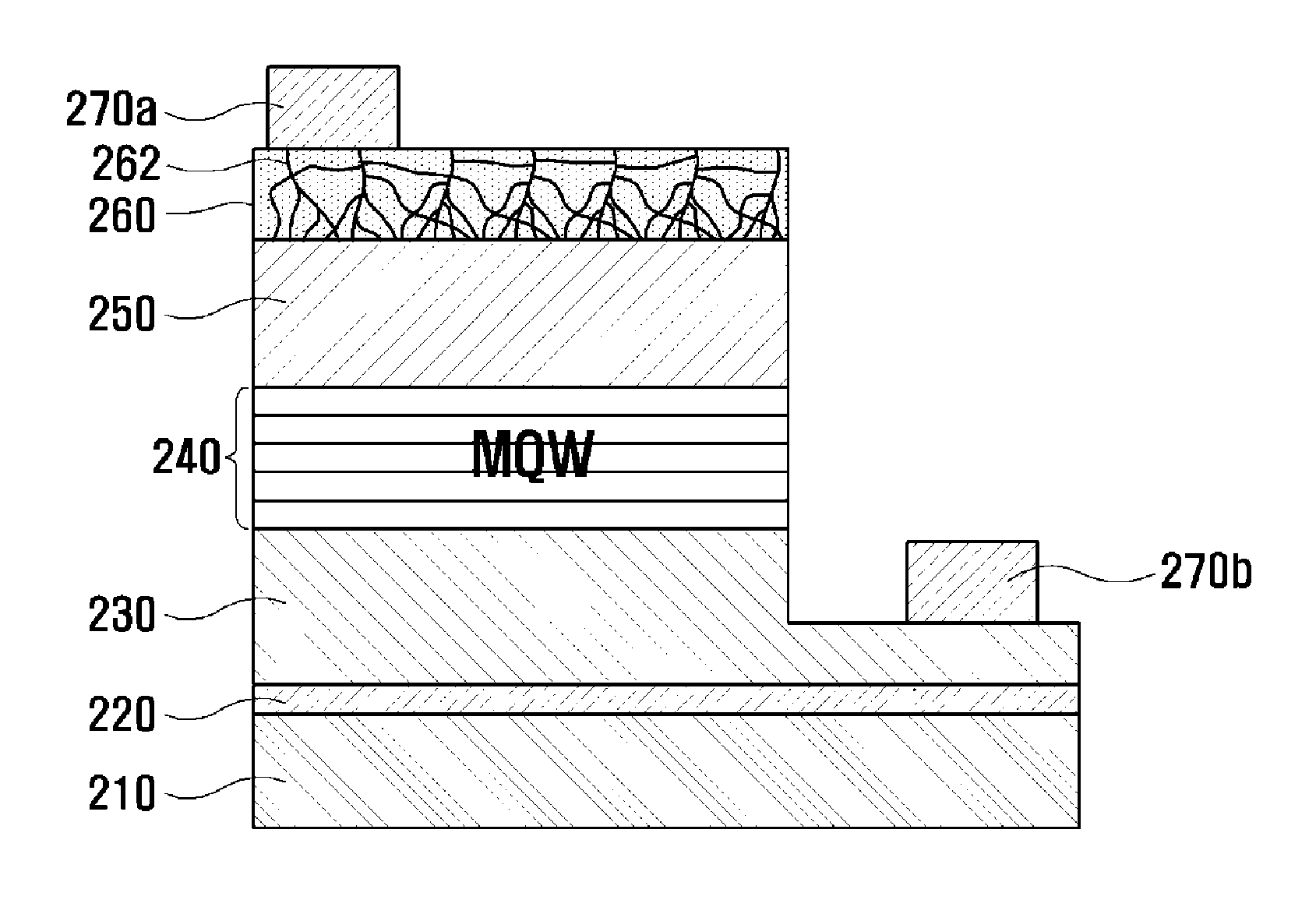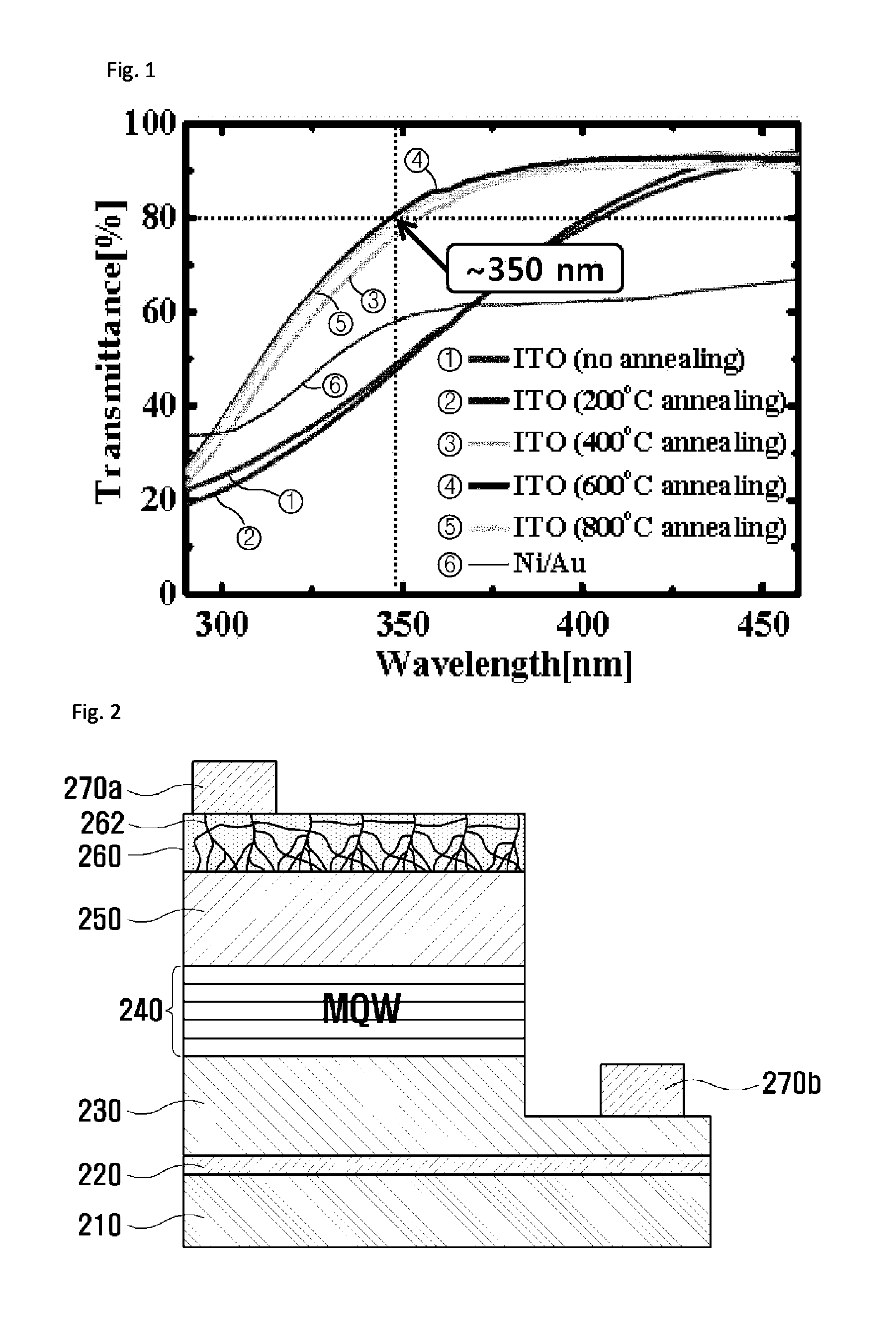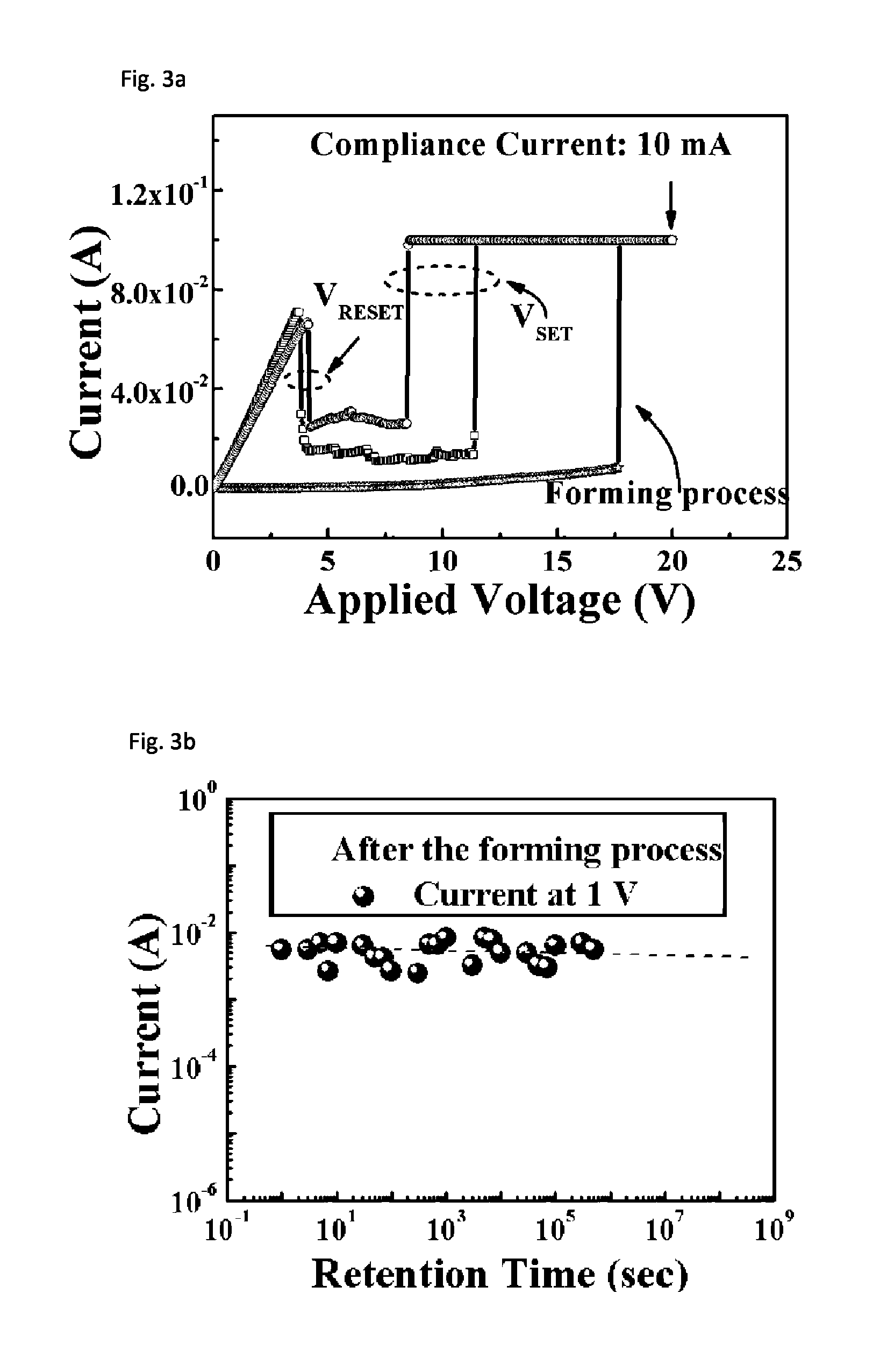Light emitting device having transparent electrode and method of manufacturing light emitting device
a technology of light emitting device and transparent electrode, which is applied in the direction of semiconductor devices, basic electric elements, electrical apparatus, etc., can solve the problems of difficult commercialization of uv leds, low light generation efficiency, and low light generation efficiency, and achieve high transmittance, high transmittance, and good ohmic contact characteristic
- Summary
- Abstract
- Description
- Claims
- Application Information
AI Technical Summary
Benefits of technology
Problems solved by technology
Method used
Image
Examples
first embodiment
[0048]FIG. 2 is a diagram illustrating a configuration of a light emitting device including a transparent electrode 260 according to the present invention.
[0049]Referring to FIG. 2, the light emitting device according to the first embodiment of the present invention is configured to include, a substrate 210 and a buffer layer 220, a first semiconductor layer 230, an activation layer 240, and a second semiconductor layer 250 which are sequentially formed on the substrate 210. In addition, the light emitting device is configured to include a transparent electrode 260 formed on the second semiconductor layer 250, an electrode pad 270a formed on an upper portion of the transparent electrode 260, and an electrode pad 270b formed on an upper portion of the first semiconductor layer 230 of which a portion region is etched to be exposed.
[0050]The substrate 210 may be constructed by using a substrate such as a sapphire substrate which is generally used for manufacturing a light emitting devi...
second embodiment
[0076]First, referring to FIG. 6a, the light emitting device according to the present invention has a flip-chip structure where light generated in an activation layer is emitted in the direction of a substrate. The light emitting device is configured by further including a transparent electrode formed by using a resistance change material of the present invention, in which conducting filaments are formed, between a semiconductor layer (p-GaN) and a reflective layer in addition to the light emitting device having a flip-chip structure in the related art.
[0077]In the second embodiment illustrated in FIG. 6a, the surface where a substrate 610 is disposed is referred to as a lower surface. In the same manner as that of the horizontal type light emitting device described with reference to FIGS. 2 to 4, a substrate 610, a buffer layer 620, a first semiconductor layer 630, an activation layer 640, and a second semiconductor layer 650 are sequentially formed, a transparent electrode 660 whe...
third embodiment
[0088]The light emitting device according to the present invention is a vertical type light emitting device. The transparent electrode formed by using a resistance change material in which the conducting filaments are formed is additionally formed between the reflective layer and the second semiconductor layer (for example, p-GaN layer) in a configuration of a general vertical type light emitting device.
[0089]Referring to FIG. 8a, the light emitting device according to the third embodiment of the present invention is configured by sequentially forming a submount substrate 890, an bonding layer 880, a reflective layer 870, a transparent electrode 860, a second semiconductor layer 850, an activation layer 840, a first semiconductor layer 830, and an electrode pad 910.
[0090]In the third embodiment, the submount substrate 890 is constructed with a metal substrate into which current can be injected. The reflective layer 870 is formed on the metal substrate 810 by using a material such as...
PUM
 Login to view more
Login to view more Abstract
Description
Claims
Application Information
 Login to view more
Login to view more - R&D Engineer
- R&D Manager
- IP Professional
- Industry Leading Data Capabilities
- Powerful AI technology
- Patent DNA Extraction
Browse by: Latest US Patents, China's latest patents, Technical Efficacy Thesaurus, Application Domain, Technology Topic.
© 2024 PatSnap. All rights reserved.Legal|Privacy policy|Modern Slavery Act Transparency Statement|Sitemap



